Great Fun in Zagorje: One of World's Safest Flying Machines, Gyrocopter
September 16, 2022 - "Gyrocopter flights are something new, different, exciting and safe for young and old, our future members! We offer everyone to experience all the beauty of the magnificent Croatian landscape from a bird's eye view, enjoying a slow and safe flight that will surely leave you breathless" these are the words of the founders of Aeroklub Gyrocopter Croatia.
As Poslovni writes, the club was founded eight years ago with the aim of expanding this relatively new branch of sports aviation in Croatia, which has a lot of potential for development.
They offer their members introductory flights and training in sports and recreational flying, and at the same time organize multi-day gyrocopter tours, flying from the Krapinsko Zagorski Aerodrom to Zabok Gubaševo.
It sounds like a type of prehistoric giant bird, but in fact the gyrocopter is a type of microlight flying machine that is considered the safest in the world, and is therefore attractive to those who are suspicious of safety, yet eager for adventure.
Croatian regulations also contribute to safety, club members can fly, with a number of safety measures that are standard, explains Nikolina Ćorković, who, along with her husband and pilot Ilija Ćorković, is the owner of the company Dva krila, which imports gyrocopters.
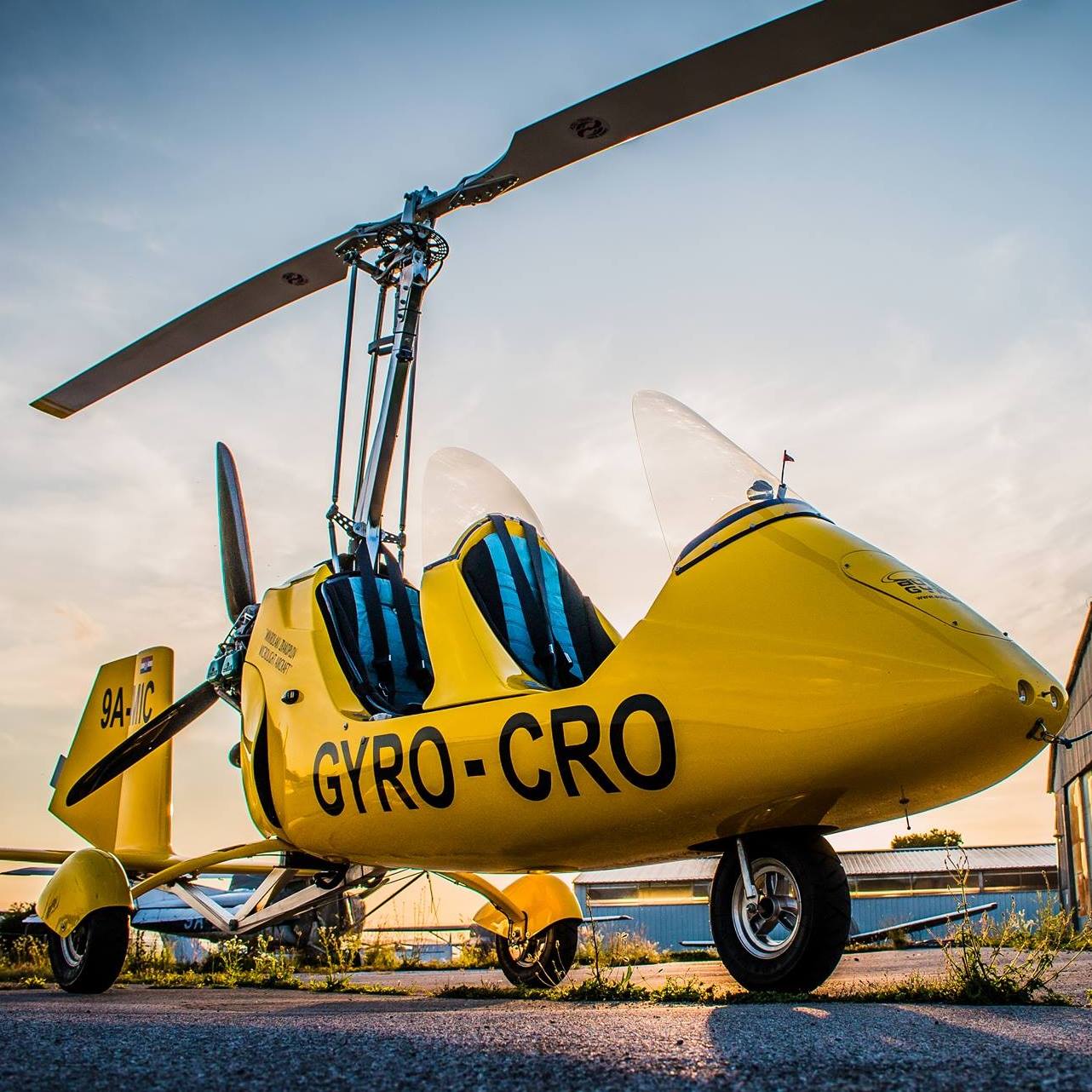
"But we were actually pioneers for these in Croatia, we imported the first gyrocopter in the country and initiated the creation of the Regulations that will regulate these flights. It was not easy, but we are trying to promote this sport, which is very developed in countries such as Poland and the Czech Republic, and to motivate young people to become pilots", says Nikolina Ćorković. The club currently has about 20 members and four budding pilots.
Pilot training includes education that lasts 2 months and a certain number of flights, and exams are taken with the approval of the Civil Aviation Agency. It is interesting that with a passed test and a flying license, anyone can get their own gyrocopter, which costs from 50,000 to 120,000 euros with depending on the equipment, and fly wherever they want.
Ćorković notes that in European countries these have multiple purposes, they are used in both public and private activities, from the coast guard to agriculture, and one Polish entrepreneur even recorded a video of him traveling to a meeting in the city from his farm in the countryside.
The club is very proud because this July they participated for the first time with their gyrocopter in the world championship of microlight flying machines in the Czech Republic, where they won 5th place, and it was a great opportunity to promote Croatia in this sport.
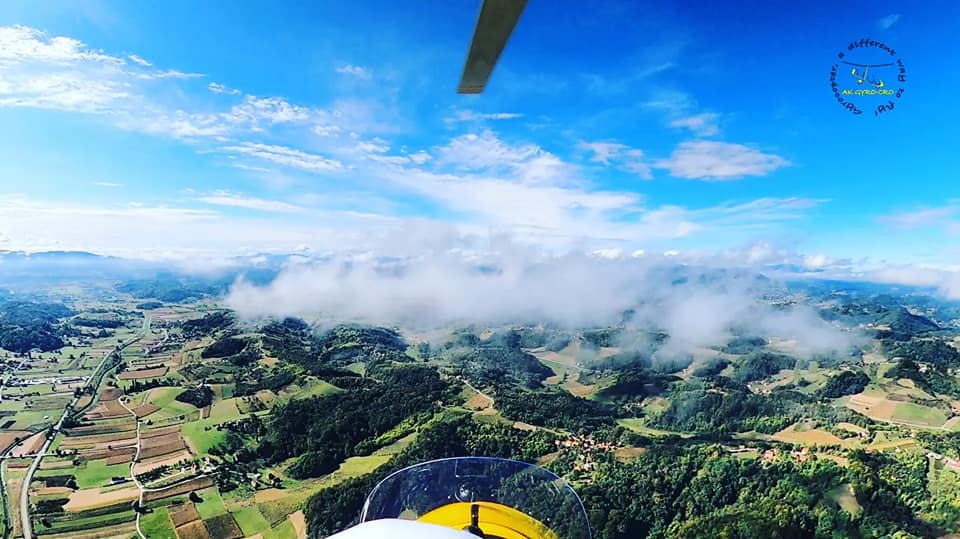
Gyrocopter has an interesting history, and its predecessor was designed in the 1920s by the Spanish aviation designer don Juan da la Cierva, after he lost his best friend in a plane crash. He then vowed to design the safest aircraft in the world, and in 1923 he introduced the Auto Gyro to the world, the predecessor of today's gyrocopter.
It is the only flying machine in the world that cannot enter a stall (breakdown of buoyancy, the most common cause of aviation accidents), and which, in the event of an engine failure, gently floats towards the ground, like a maple seed.
Basically, it functions like its big brother, the helicopter, but the rotor of the gyrocopter while airborne is not driven by an engine like in a helicopter, but by an air current that passes through the rotor blades. The machine gained worldwide attention in the film "Mad Max 2" and in the James Bond film "You Only Live Twice", when Sean Connery maneuvered "Little Nelly" on an Asian island.
Aeroklub emphasises that the gyrocopter is not particularly sensitive to turbulence, because the tips of the rotors move at a speed of 700 km/h through the air and are not bothered by wind gusts of 70 km/h. For this reason, even in difficult weather conditions, it is safe to fly in one.
Gyrocopter is equipped with standard and advanced aviation equipment, radio transmitter, transponder, as well as the latest technological innovations in the field of navigation for monitoring meteorological conditions and air traffic, and is therefore an excellent choice for sports, panoramic and international flights.
Nikolina Ćorković revealed that their Gyrocopter with one fuel tank of 68 liters can fly for three hours, with an average speed of 120 km/h, which is a range of over 400 kilometers. It can be flown by children and the elderly, and the restrictions are a height of at least 140 cm and a maximum weight of a person of 100 kilograms.
On September 24, the Croatian Civil Aviation Agency is organising the aviation event "Let's fly together, let's fly safely" at the Gubaševo-Zabok airport with the aim of promoting the culture of safety in aviation.
The event is intended for users and operators of general aviation as well as students and pupils of educational institutions attending technical courses, in order to get them interested in sports aviation, but also to motivate them to choose aviation professions in their future education.
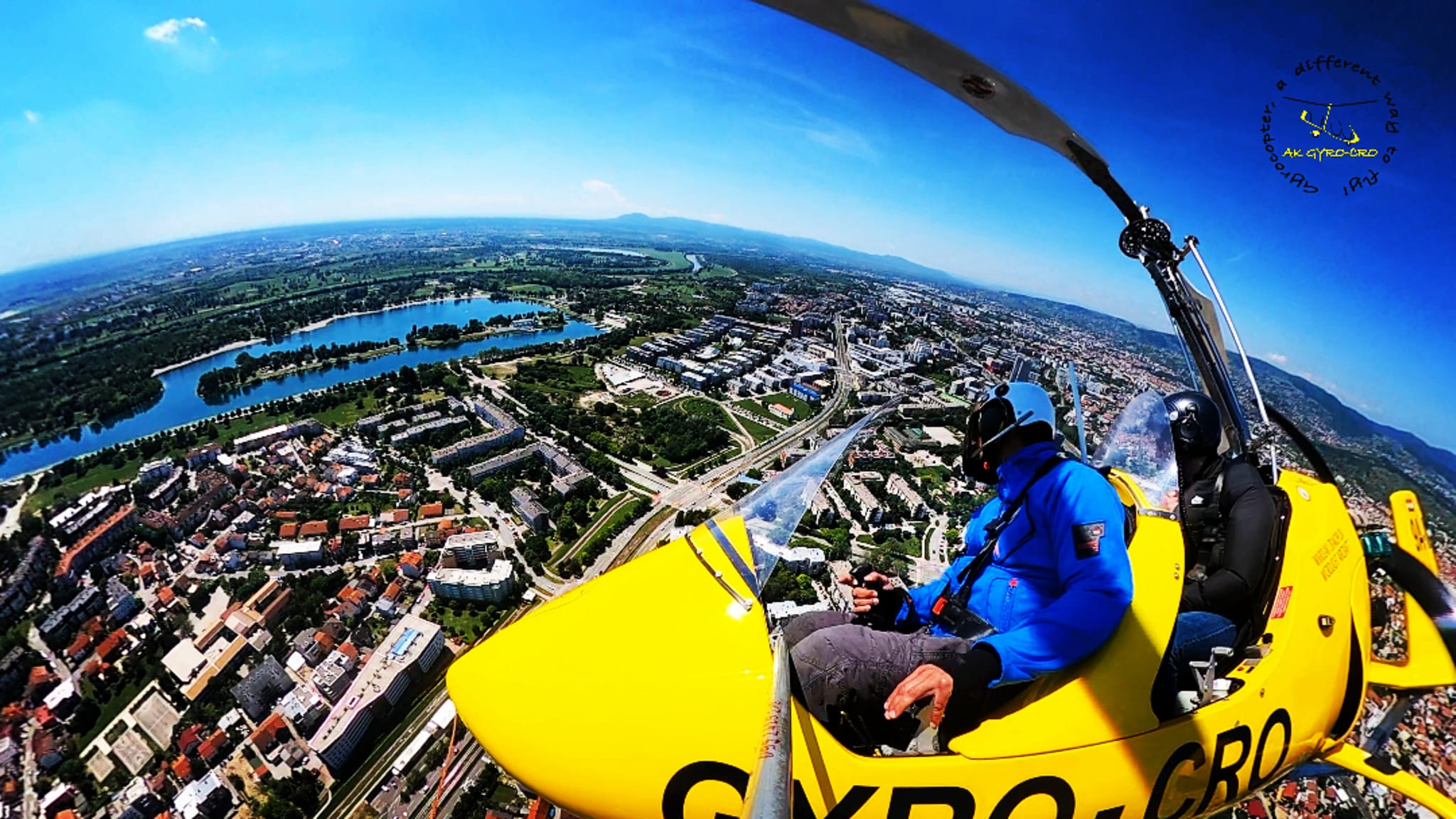
"The event is unique. It is the first time that it is organized by the Croatian Civil Aviation Agency and it is almost certain that it will continue to be held in the coming years, always in different locations. "Let's fly together, let's fly safely" is an interactive, educational and attractive event. It offers the opportunity to participate in a large number of educational workshops in the field of aviation, which will not only be theoretical but also practical in the field, especially when it comes to flight inspections of flying machines. We have also organised quizzes for all those who will attend the workshops, and we will reward the best with appropriate gifts", the Agency announces.
At the same time, organisations for training pilots of airplanes, paragliders, paratroopers, and balloons will be presented to visitors at Gubaševo airport, and visitors will be able to ask about anything they are interested in when it comes to training (conditions, duration, price, permits, etc.). About 30 aircraft will be located at the airport from early morning, and an event of this type would certainly be unthinkable without an airshow and flight program that starts in the afternoon with numerous surprises, the Agency promises.
All photos courtesy of Gyrocopter Hrvatska.
For more, make sure to check out our dedicated Lifestyle section.
Amended Road Safety Act In Force As Of Saturday
ZAGREB, 28 July 2022 - The amended Road Safety Act, introduces a number of changes, notably regarding the use of electric vehicles such as scooters, as well as the obligation for medical professionals to notify drivers in case they are temporarily unfit to drive, goes into force on Saturday.
The Ministry of the Interior notes that the new law regulates for the first time the use of electric scooters, unicycles, Segways and other similar vehicles.
The law defines areas where such vehicles may be used and the conditions they and their drivers have to meet in order to participate in traffic.
Under the law, all persons riding such vehicles have to wear a helmet and not only those above 16, as is the case with bicycles. They must use cycle lanes or, if there are none, ride slowly along sidewalks and in traffic-calming zones.
At nighttime or during periods of low visibility, all persons riding bicycles, scooters and similar electric vehicles must wear reflective vests or other reflective gear.
E-scooter riders, as well as cyclists wearing headphones in both ears, face a fine of HRK 300.
An electric scooter with a motor of more than 0.6kW or one that can develop a speed of more than 25 kmph must not be used in public traffic if it does not have a speed limiter or is certified and, if possible, registered, the Strujni Krug e-mobility association has said.
The Ministry of the Interior also recalls that the amended law introduces an obligation for doctors examining or treating a driver as well as driver's GP to notify the driver in case the driver is temporarily unfit to drive and to enter this in their medical record.
Doctors and drivers who fail to comply with the new regulations will be fined.
A person may be temporarily unfit to drive for a maximum six months, after which the driver need not undergo another medical checkup.
The new law regulates for the first time the participation of horse riders in road traffic and introduces a new term denoting a fully autonomous vehicle, a vehicle that can operate without a driver.
The law also envisages penalties for drivers using partially autonomous vehicles as fully autonomous ones, without the driver sitting in the driver's seat.
For more, check out our politics section.
How Safe Is Croatia For a Solo Female Traveller?
January 28, 2022 - As COVID restrictions get lifted and things are slowly getting back to normal, the excitement of travel is returning for many. But how safe is Croatia for a solo female traveller?
Of course, this still means travel plans will involve precautions such as testing. And for women, in particular, there is always the factor of safety to consider - especially for women who travel alone, or in a small group with other women. Given the statistics of women’s safety being taken advantage of on holidays abroad, this is enough reason for many women to be hesitant or fully set back off the idea of travelling. But they shouldn’t have to miss out on travel, especially not after these challenging past couple of years, from which we could all use an exciting holiday abroad as a celebration of near-normalcy.
However, for any solo female traveller planning to visit Croatia, you’ll be happy to know it is the perfect destination regarding both safety and attractions. Aside from its beautiful landscapes, rich history, and economic value for travel, Croatia consistently features high on global rankings for being one of the safest countries in the world. Last year, it was ranked the 2nd country in Europe for people feeling safe walking the streets at night alone. And having lived in Croatia for most of my life, I can say from personal experience that I’ve never felt as safe on a night out anywhere else as I have there. Especially as a young woman currently based in London, UK. With the rising issue of misogynistic crimes, particularly on the streets and on the nightlife scene happening here, there are definitely times when I miss how carefree I got to be in Zagreb or Hvar. And Croatia is home to beautiful scenery, historic and cultural monuments, including the set of Game of Thrones, and nightlife including music festivals such as Ultra and INMusic. The 2022 summer season should see many flying over to Croatia to experience these places and events, and it is important that everyone should not only enjoy themselves but not at the cost of their health or personal safety.
If you travel to Croatia, you’ll generally be in safe conditions, whether you choose to go to the Dalmatian coast or the capital Zagreb. I would advise any tourist to be wary of pickpockets or scammers, as these tend to be a common issue during tourist season. Otherwise, if you’re travelling on the coast, you can enjoy long hikes, trips to the beach, or a late-night roaming the streets without fear. In old towns like Split and Dubrovnik, however, be careful not to get lost in narrow streets and alleyways, which are not always well-lit. But in a country known for its low violent crime rates, you shouldn’t be too paranoid about having to walk a few dark streets.
A thing to know about Croatian culture is the value placed on helping others, especially in a vulnerable position (for instance, if the person has had a lot to drink). It’s a small country, so you get more of a sense of community you wouldn’t get in countries such as the UK or the US. And Croatian people are known for being friendly and hospitable and welcoming towards any tourist.
Uber drivers are reliable and not as likely to take advantage of passengers as in other countries, and public transport is safe. If visiting Zagreb, you’ll mainly be using the buses and trams to navigate the town, which are well-connected and not too expensive. Make the most of visiting the main square or upper town, one of the parks such as Jarun or Bundek, or the eclectic range of clubs and bars in Zagreb.
Especially the latter - Croatians enjoy a drink. Obviously, it should go without saying to drink responsibly. It’s always important to stay in control especially when in a foreign country. And of course, be careful not to fall victim to spiking. But in general, Zagreb nightlife isn’t met with many unsafe conditions. And, if your nights out tend to go into the early hours of the morning, the streets are usually quiet at that time, so you should have little to no worry about running into any danger. Speaking from many personal experiences, I have never experienced a night out in Zagreb in which neither my friends nor I felt truly threatened. We have always looked out for our safety, as a group of young people should when out and about, but were still able to enjoy ourselves and return home safe the next morning, whether it was by public transport, Uber, or walking home.
It’s totally fine to worry about safety wherever you travel, especially following a pandemic. As fun as it is to travel, it’s always important to have your wits about you and to be prepared for any situation. And speaking on behalf of women: shouldn’t we be entitled to enjoy ourselves on an exciting journey without having our personal safety at risk? Especially in Croatia, a must-visit destination with plenty to offer.
For more, check out our dedicated lifestyle section.
LGBTQ Travel Safety in Croatia: 39th Most Popular Country in the World
March 9, 2021 – When it comes to traveling, Croatia has been known as a gay-friendly destination, even though not all Croatians in every part of the country are fond of accepting gay and lesbian couples. In a recent study, LGBTQ travel safety in Croatia ranks 39th on the list of 150 world's most popular countries for LGBTQ+ travel.
The research has been conducted by Asher and Lyric Fergusson, an Australian-American married couple, who write and do the research studies on topics that help travelers to travel safely. They have now taken an in-depth look at LGBTQ+ rights, country by country, reviewed individual laws and gathered data from various trusted international sources to create the definitive "LGBTQ+ Travel Safety Index" that shows safest, as well as least safe countries for LGBTQ+ travel.
After more than 250 hours of research, they made a list of 150 most (and least) popular countries, where Croatia took 39th place. We reviewed the information brought out about Croatia and added some useful information about LGBTQ+ communities in Croatia.
Croatia in the first third of best countries for LGBTQ+ safety
In a comprehensive overview, researchers listed 150 countries from worst to best regarding travel safety for LGBTQ members. The criteria according to which they made a list consists of ten critical factors:
- Legalized same-sex marriages
- Worker protections
- Discrimination protections
- Criminalization of violence
- Adoption recognitions
- Quality of life
- Transgender legal identity laws
- Illegal same-sex relationships
- Morality laws

Source: Asherfergusson.com
According to the data collected by these criteria, the researchers gave Croatia an index of 188 points and a grade C+ from most safe to highest dangerous places (A to F), placing it among the first third of the best countries in the world in terms of LGBTQ+ safety.
In Croatia, the same sex-relationships are legal since 1977. However, same-sex marriage or families are not permitted, but same-sex life partnership is (i.e., civil union). The Life Partnership Act came into force back in 2014, and since then, hundreds of life partnerships have been concluded, with male life partnerships being slightly more common than female. Also, it is legal to change gender without sex reassignment surgery.
Violence against the members of the LGBTQ community is considered a hate crime in Croatia. Although this study says only sexual orientation is protected in Croatia, the truth is, both sexual orientation and gender identity are protected by numerous Croatian laws. The protections against discrimination are broad, although not constitutional. Croatian Constitution still does not include same-sex families, defining marriage only as "a life-long community of woman and man." However, one year ago, the Constitutional Court gave the right to same-sex couples in Croatia to be foster parents. Before, only single gay people could adopt children.

Source: Asherfergusson.com
The top ten safest countries for LGBTQ+ travel are Canada, the Netherlands, Sweden, Malta, Portugal, Belgium, the United Kingdom, Spain, Norway, and France. At the very end of the list, being the world's least safe countries for LGBTQ+ travel are Nigeria, Saudi Arabia, Malaysia, Malawi, Oman, Jamaica, Myanmar, Qatar, UAE, and Yemen.
Interestingly, the study shows that less than 25 percent of people said Croatia was a good place to live, according to Gallup's poll question's votes. These statements are arguable since one can experience life and circumstances in Croatia only by visiting it personally. Nonetheless, many places in Croatia have been gay-friendly for a long time, especially tourist destinations.
LGBTQ-friendly destinations in Croatia
Among Croatia's popular tourist destinations, Dubrovnik is considered the most LGBTQ-tolerant, while its neighboring island of Lokrum welcomes gays on nudist beaches. Of other popular Croatian coastal destinations, Split, Rovinj, Krk, Rab, Rijeka, and Hvar also welcome members of the LGBTQ community. Rab island has also become the first declared gay-friendly destination in Croatia.
Naturally, any larger town in Croatia that depends on tourism is accommodating, and gay and lesbian couples won't face discrimination. Some even go that far as to say that Croatia is one of the most tolerant countries in Europe for LGBTQ+ travelers. Meanwhile, people in smaller towns in rural parts of Croatia, due to their high traditional and religious values, tend to be very judgemental.
Last year, Croatia saw 66 new same-sex life partnerships, increasing for as many as 47 life partnerships than in 2019. Most of them were registered in Zagreb and Primorje-Gorski Kotar and Istria counties. The first gay marriage was even held in Slavonia, in Kutjevo, where such marriages are still not very well accepted among citizens, which gained a lot of interest there.
Bigger cities such as Zagreb find same-sex marriages and LGBTQ communities acceptable, as proven by the Zagreb Pride celebration of many years standing, even in pandemic-marked 2020. Still, a recent horrific hate crime perpetrated in Zagreb's Maksimir Park against a gay man, when two attackers threw a Molotov cocktail on him and caused him second-degree burns. Zagreb Pride association later condemned the attack, calling it the "worst anti-gay hate crime ever reported in Croatia." They and such associations, most of which are located in Zagreb, are trying to improve the position of LGBTQ people in the community, i.e., in Croatia.
Pride celebrations have also been organized in Croatian cities of Split and Osijek, while some other supporting celebrations occasionally happened in Rijeka and Pula as well. Also, Croatia's numerous music festivals and carnivals always welcome LGBTQ music lovers.
Although not all Croatians are tolerant, nor does Croatia have all legal protections for gay or lesbian persons, it seems like times are slowly changing for the better in creating a safe and tolerant environment for LGBTQ+ people.
For the latest travel info, bookmark our main travel info article, which is updated daily.
Read the Croatian Travel Update in your language - now available in 24 languages.
Tourism Ministry Announces Campaign for 'Safe Stay in Croatia' Label
February 1, 2021 – The Ministry of Tourism and Sport will launch a campaign for the "Safe Stay in Croatia" label in mid-February, which will show tourists that Croatia applies health and safety protocols during the coronavirus pandemic.
After announcing that the Ministry was preparing a "Safe travel" label for the upcoming tourist season, Minister of Tourism and Sports Nikolina Brnjac confirmed today that they would start the campaign in mid-February.
Tourism must show adaptability and responsibility
As Hina reports, apart from tourist entities for which this label is intended, airlines, gas stations, various tourist facilities, cultural and natural attractions will also use it. The protocols will be harmonized with the recommendations of the Croatian Institute of Public Health (HZJZ). It will also include a sticker with a QR code that can be displayed in a visible place. As part of the promotion, a special website will also be launched.
The Ministry will assign and keep the labels free of charge and monitor their application with associations.
"In addition to the application of these protocols, important preconditions for achieving tourist results are a favorable epidemiological situation, a sufficient level of vaccination, and the perception of destination security. Croatia was recognized for that last year. We will continue to work on it in 2021. Due to the pandemic, the tourism sector will again have to show creativity, adaptability, responsibility, and cooperation," said the Minister.
Adherence to global standardized health protocols
Noting that the introduction of these labels is an important wheel in branding Croatia as a safe destination, the Minister expects that by Easter, it will contribute to the promotion, recalling that it is essential to continue to adhere to epidemiological recommendations and measures.

Source: Pixabay
The labels are a national upgrade of last year's "Safe Travel" labels of the World Travel and Tourism Council (WTTC) to make it easier to identify destinations and companies that adhere to global standardized health and hygiene protocols. The Croatian Ministry of Tourism and Sport immediately got involved. Harmonization of safety protocols for restaurants, hotels, family farms, holiday homes, beaches, marinas, boats, travel agencies, rent-a-car, tourist guides was one of the first tasks of the Council for the Repair and Development of Tourism.
Slow vaccine distribution not in favor of tourism trends
Minister Brnjac said that the vaccine is excellent news for tourism. Vaccination of tourism workers, for which about 70 percent of them are interested in Croatia, will play an important role in tourism promotion and results.
She says the slow distribution of vaccines and vaccinations, the new strain of the virus, and the growing number of infections in Europe and the world, are not in favor of tourism trends. It is necessary to open borders and overcome the psychological barrier of fear to travel again. It is encouraging that the EU insists on an agreement on the quantity and dynamics of vaccine delivery.
"We hope that in Croatia, as in other EU member states, a good initial vaccination rate will continue. Given the current situation with the vaccine at the EU level, Croatia's position is to insist on talks with pharmaceutical companies on the agreed quantity and dynamics of vaccine delivery," adds Brnjac.
Among other things, Croatia is in contact with representatives of other EU member states. At the moment, all EU member states want to speed up vaccination.
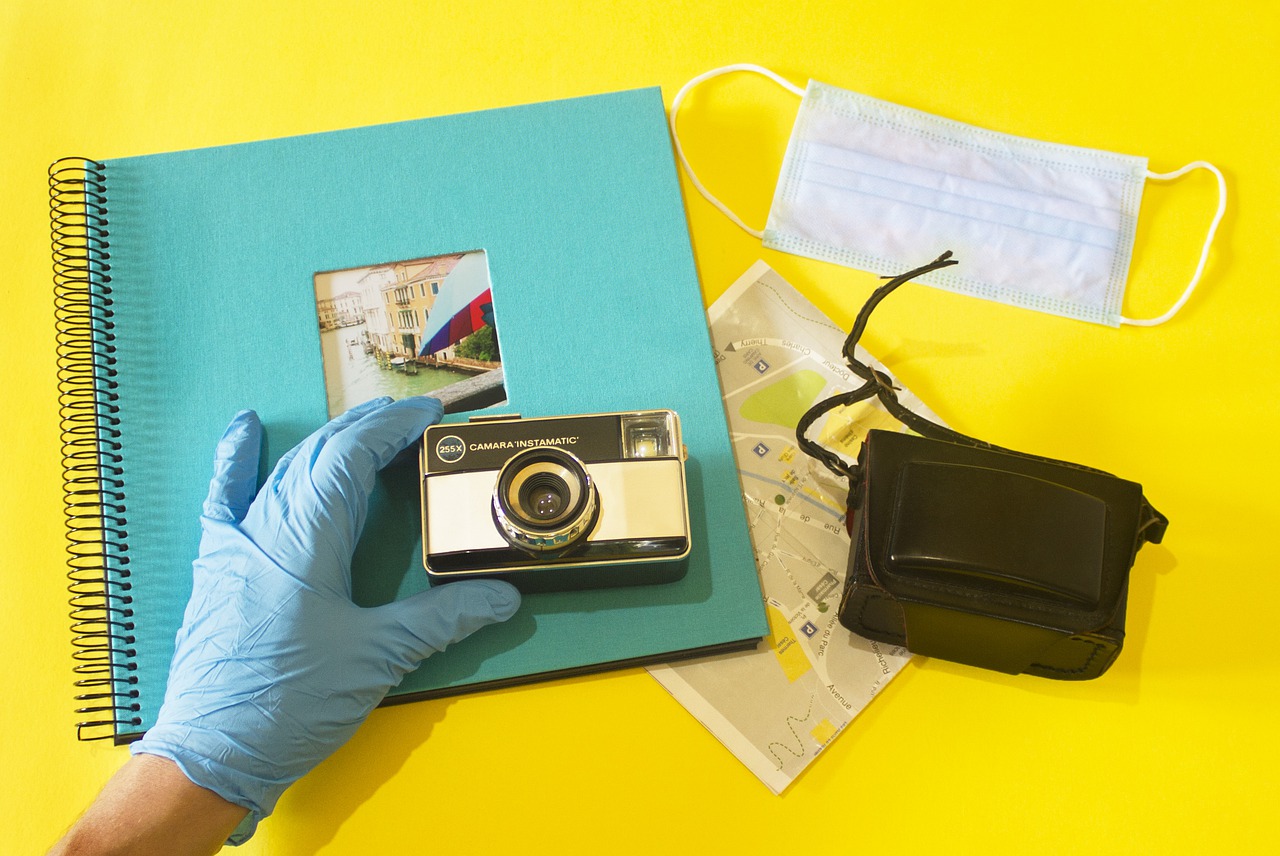
Source: Pixabay
Regarding the introduction of measures for tourist arrivals and border crossings, the Minister recalls that EU leaders agreed to work on a standardized form of evidence of vaccination in compliance with EU data protection regulations. This certificate would, for the time being, be used exclusively for medical purposes.
"For crossing Croatia's border, a negative PCR test result not older than 48 hours should be presented, or PCR testing should be performed immediately upon arrival (at one's own expense), with the obligation of self-isolation until a negative result. If it is impossible to test, a self-isolation measure will last for ten days. Further measures will be subject to the course of the epidemiological situation in Croatia, but also specific markets," said the Minister.
Croatia recommended destination for 2021
In the current situation, the Minister considers it's good that the people from foreign markets are eager to travel. It's even better that Croatia is mentioned as a desirable destination, thanks to the proximity to many markets and good transport links, especially road.
"This year, we expect a distinct 'last-minute' demand and demand for safe, fast, and easily accessible destinations, as well as accommodation that provides additional security such as holiday homes, on boats, in camps, and staying outdoors in nature. There are expectations from domestic tourists, who can be a driver of tourism, as well as from the cooperation with the European Association of Travel Agencies and Tour Operators (ECTAA), according to which Croatia in 2021 has the status of a selected and recommended destination," says the Minister.
She believes that a favorable epidemiological situation will be maintained in Croatia with the adherence to the measures. The tourism sector is ready to prove its responsibility and provide a safe stay this year as well. Through cooperation, knowledge, and experience, Croatia will continue to position itself as a desirable destination for foreign and domestic tourists.
For the latest travel info, bookmark our main travel info article, which is updated daily.
Read the Croatian Travel Update in your language - now available in 24 languages.
Croatia is one of the Most Safe Countries in 2021 for Visitors
December 4, 2020 – Accepting all known knowledge of the Coronavirus risk and the announced vaccines, security and risk experts International SOS have published their latest, annual Travel Risk Map. It says Croatia is one of the most safe countries in 2021 for visitors
With the end of the life-halting Coronavirus in sight, thanks to several effective vaccines announced, which country would be best to visit next year? Well, Croatia is one of the most safe countries in 2021 for visitors.
It's been a long, difficult year for everyone. It's maybe hard to believe if you live in Croatia and haven't much travelled outside the country, but the residents of Croatia have had it no more difficult than anywhere else. With only around 4 million inhabitants, there's lots of space in Croatia to move around.
Take in comparison Britain's London. That one city (1,572 km²) alone has 9 million people. Croatia has 56,594 km² for less than half the number of people. But, this generous amount of space in which to move around is not the only reason Croatia is one of the most safe countries in 2021 for visitors.
On 2 December 2020, Total Croatia News published the annual report based on the Global Terrorism Index, identifying Croatia is one of the most safe countries in 2021 in regards to the absence of terrorist threat and effect. Now, according to the latest annual Travel Risk Map, it has been designated that Croatia is one of the most safe countries in 2021 for visitors.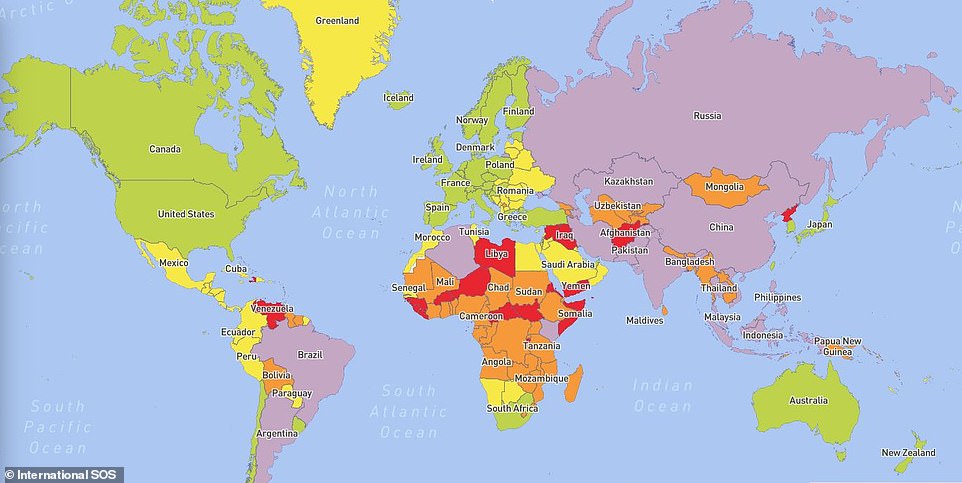 Security and risk experts International SOS's Travel Risk Map for 2021.
Security and risk experts International SOS's Travel Risk Map for 2021.
The map, created by security and risk experts International SOS , ranks the safety of countries across the globe taking into account medical, security and road risks. It assesses the risk of political violence, social unrest, and the threat of violent and petty crimes – and, most importantly this year, the impact of the pandemic.
For the first two categories, countries are given a rating out of five, while road safety is rated out of four based on the mortality rate per 100,000 people. The places with the highest risk level for security issues are mostly in Africa, with South Sudan, Mali, Yemen, Somalia and the Maiduguri region of Nigeria listed under the most dangerous, along with the Donetsk and Luhansk regions of the Ukraine.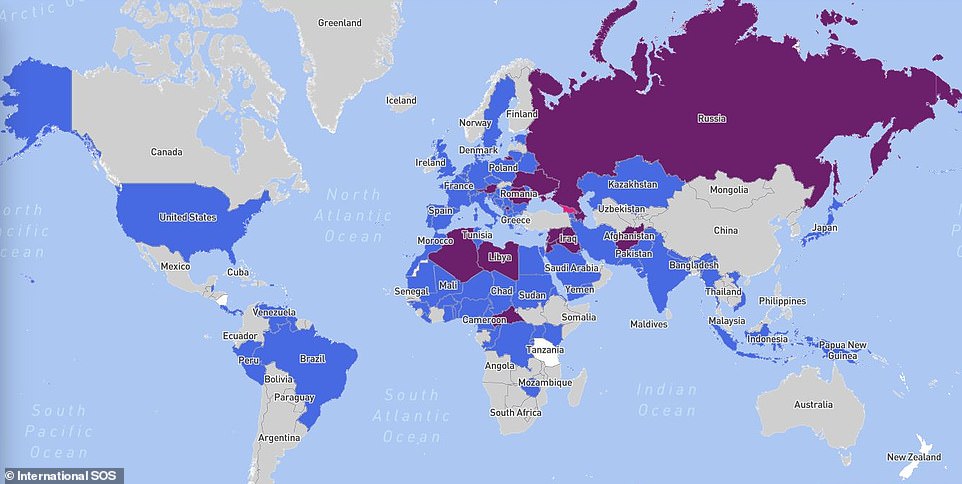 International SOS's map showing the countries with the most and least Covid-19 disruption. Very low-risk countries are marked in white, low risk in grey, medium in blue, high in purple and very high in pink.
International SOS's map showing the countries with the most and least Covid-19 disruption. Very low-risk countries are marked in white, low risk in grey, medium in blue, high in purple and very high in pink.
Very few countries rank above Croatia in the new safety map, New Zealand, Tanzania and Nicaragua among them, meaning Croatia is one of the most safe countries in 2021 for visitors.
For the residents of crowded cities elsewhere in Europe, Australia or the USA who have felt more than restricted in 2020, it might be worth remembering when planning next year's escape that Croatia is one of the most safe countries in 2021 for visitors.
Croatia given WTTC Safe Travels Stamp, Says Ministry
ZAGREB, Aug 23, 2020 - The Tourism Ministry said on Sunday that the World Travel and Tourism Council (WTTC), which represents the global travel and tourism sector, had awarded Croatia its Safe Travels Stamp, created in May this year.
The designation enables the identification of destinations and companies around the globe that have adopted global health and hygiene standards, the ministry said.
"As a popular European and Mediterranean destination we have been trying to cope with all problems and secure stability and security for local population and all travellers who have decided to visit us this year despite the current situation. In order to enable 'the new normal', we have prepared the necessary safety protocols and measures to make the stay of tourists in our country as pleasant as possible and to protect their health," Tourism and Sports Minister Nikolina Brnjac said.
Along with Croatia, the WTTC Safe Travels Stamp has also been awarded in Europe to Portugal, Spain, Slovenia, Bulgaria, Montenegro, Ukraine and Turkey. Twenty-two other destinations around the world have been given the WTTC Safe Travels Stamp, the ministry said.
For the latest travel info, bookmark our main travel info article, which is updated daily.
Read the Croatian Travel Update in your language - now available in 24 languages
How Safe is Croatia? Safest and Most Dangerous Countries List Published
Just how safe is Croatia?
While everyone complains about some aspect of life or another here in Croatia, the reality is that the safety levels are excellent. Your kids can easily be left to play on their own like ''back in the good old days'' in other countries, and in many aspects it's as if time has stood still. The majority of crime here is traffic crime, rarely does anything major occur.
A list of the most dangerous and the safest countries across the planet has been published, and the answer to the question ''How safe is Croatia?'' has been been delivered.
As Poslovni Dnevnik writes on the 17th of November, 2018, Libya, Afghanistan and Somalia are listed as the most dangerous countries in the world, while here in Europe, Finland, Norway, and Iceland have been rated as the safest.
The list has been created from the data of the security specialists of the International SOS and Control Risk companies, which deal with the topics of both medical and safety assistance. On their interactive map, you can find data for countries that are rated in three categories - safety, medical questions, and road safety, according to a report from Večernji list.
The countries that are marked in a dark red colour are the worst rated when it comes to safety and security, while those in a light green colour have been considered to be the safest.
In Croatia's immediate vicinity, Slovenia has been declared the safest while Kosovo is the least secure. Croatia's neighbour to the north, Slovenia, has been rated as a country with low risk and Kosovo carries a medium risk. Croatia, as well as its neighbours; Hungary, Bosnia and Herzegovina, Serbia, and Montenegro are rated as countries with a low risk.
While some are annoyed by the way people tend to drive here, even when it comes to road safety, Croatia is also a country with an apparent low risk according to this data, while in the medical category, Croatia belongs to the best possible category.
Click here to view the full list, or simply see where your country lies! Make sure to keep up with our travel page for more.
Croatian Mountain Rescue Service: Dear Tourists, Careful With Those Floaties
Floaties are best kept in pools.


